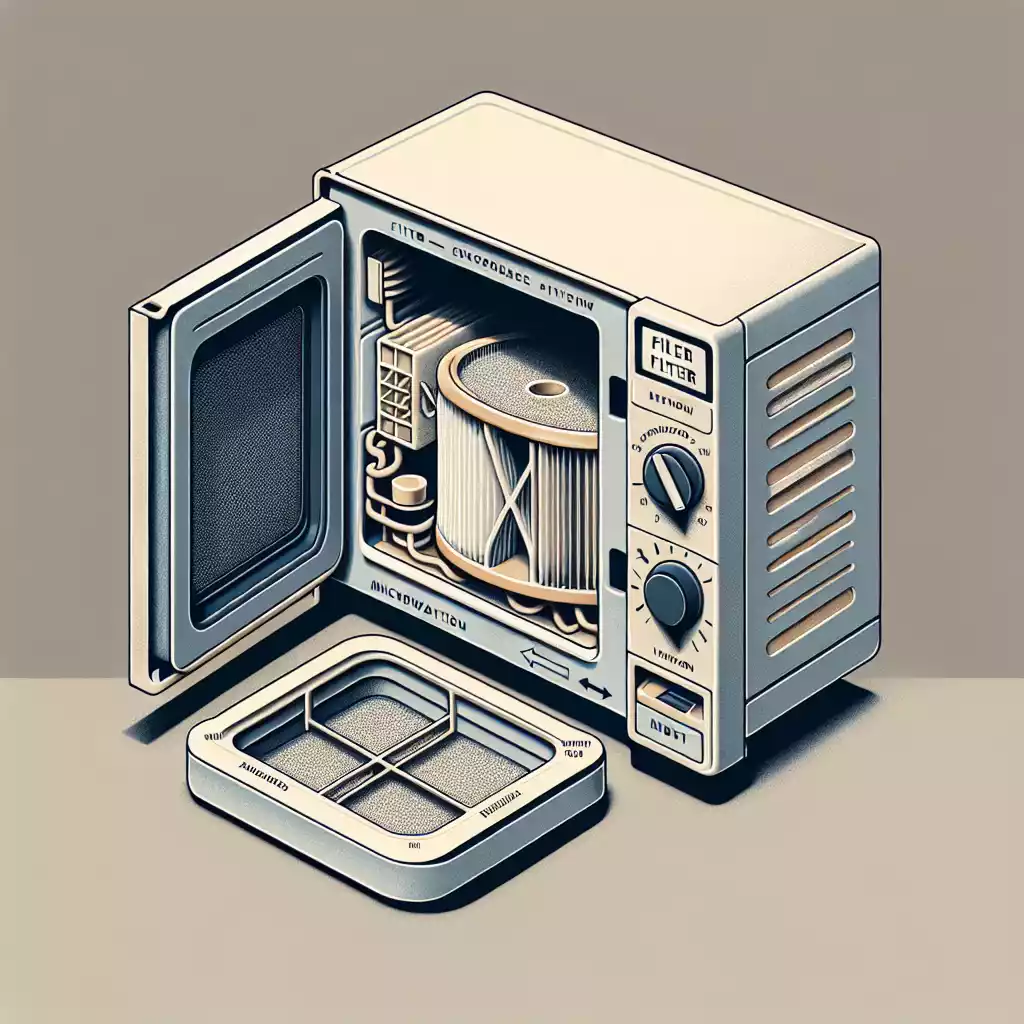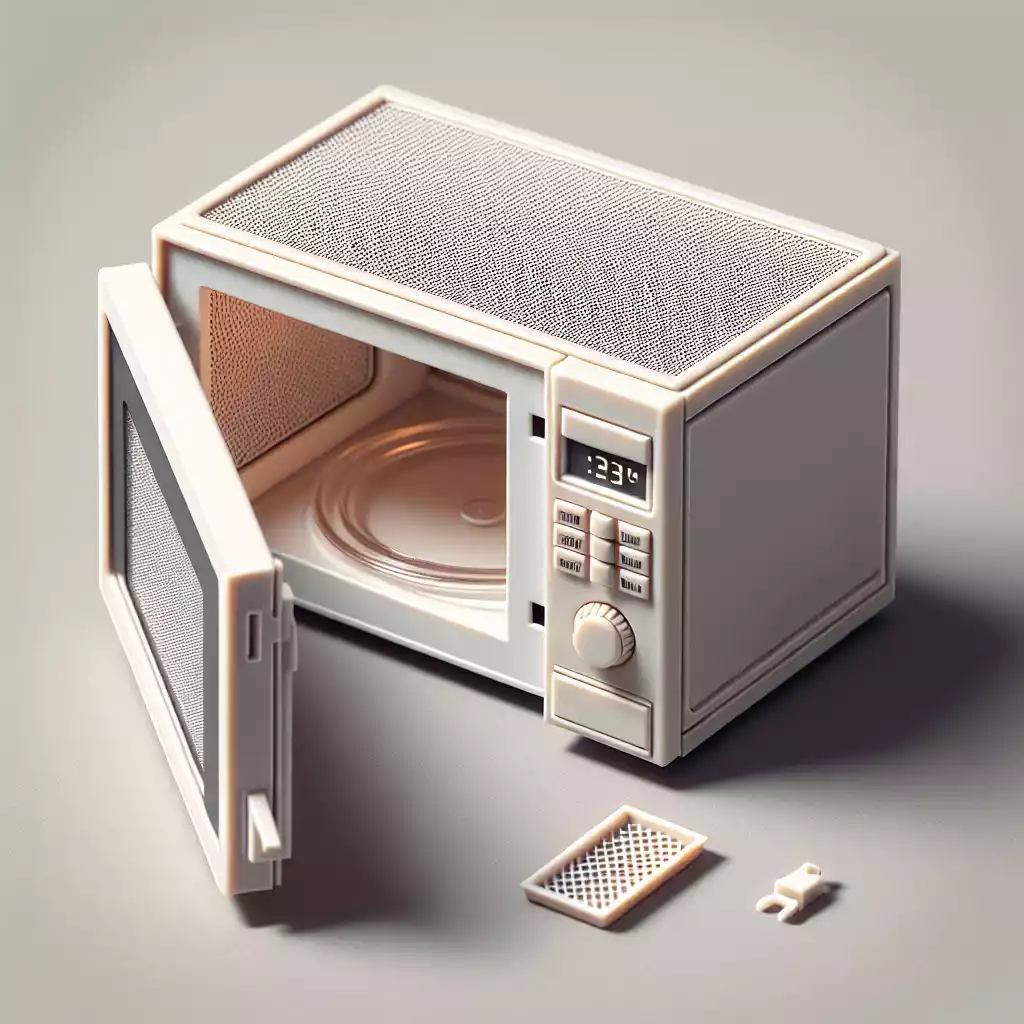Understanding Microwave Ovens
Microwave ovens have revolutionized cooking since their introduction in the mid-20th century. These appliances use microwave radiation to heat food quickly and efficiently. But have you ever wondered what components make up a microwave and how they function? Knowing the basics can help you understand the role of filters in these devices.
The Evolution of Microwave Technology
The first microwave oven was invented by Percy Spencer in 1945, and it was initially called the “Radarange.” These early models were bulky and expensive, but over time, technological advancements made them more compact and affordable for everyday use. Modern microwaves come with various features, including defrost settings, convection capabilities, and yes, filters.
Basic Components of a Microwave
A microwave consists of several key components:
• Magnetron: Generates microwave radiation.
• Waveguide: Directs the microwaves into the cooking chamber.
• Turntable: Rotates the food for even cooking.
• Control Panel: Allows users to set cooking times and power levels.
• Filters: In some models, filters are used to trap grease and odors.
The Role of Filters in Appliances
Filters play a crucial role in many household appliances, ensuring they operate efficiently and safely. But why are filters important, and what types are commonly used?
Why Filters Are Important
Filters help remove contaminants, such as dust, grease, and odors, from the air or other substances passing through an appliance. This not only improves performance but also extends the life of the appliance and enhances safety by preventing the buildup of potentially flammable materials.
Types of Filters Used in Appliances
Different appliances use various types of filters:
• Air Filters: Found in HVAC systems, air purifiers, and some vacuum cleaners.
• Water Filters: Used in refrigerators, coffee makers, and water purifiers.
• Grease Filters: Common in range hoods and some microwaves to trap grease particles.
• Odor Filters: Used to neutralize odors, often made from activated charcoal.
Do Microwaves Have Filters?

The answer depends on the model and design of the microwave. Some microwaves come equipped with filters, while others do not.
Types of Filters in Microwaves
Microwaves that have filters typically use one or more of the following types:
• Grease Filters: Usually made of metal mesh, these filters trap grease particles from the air.
• Charcoal Filters: These filters help absorb odors, keeping your kitchen smelling fresh.
How Microwave Filters Work
Grease filters trap grease particles as air passes through them, preventing the buildup of grease inside the microwave. Charcoal filters, on the other hand, absorb odors through activated charcoal, which has a large surface area that traps odor molecules.
Maintenance and Replacement of Microwave Filters
Maintaining and replacing microwave filters is essential for optimal performance and safety. But how do you know when it’s time to replace them, and what steps should you follow?
Identifying When to Replace Filters
Here are some signs that your microwave filter needs replacing:
• Reduced Efficiency: If your microwave isn’t heating as effectively, a clogged filter might be the cause.
• Odors: Persistent odors can indicate that the charcoal filter is saturated and no longer effective.
• Visible Dirt and Grease: If the grease filter appears dirty or clogged, it’s time for a replacement.
Steps to Replace Microwave Filters
Replacing microwave filters is generally straightforward:
1. Turn Off the Microwave: Ensure the microwave is unplugged to avoid any electrical hazards.
2. Locate the Filter: Refer to your microwave’s manual to find the filter’s location.
3. Remove the Old Filter: Carefully take out the old filter.
4. Install the New Filter: Insert the new filter, ensuring it fits securely.
5. Test the Microwave: Plug the microwave back in and test its performance.
Common Problems with Microwave Filters
Microwave filters can encounter several issues if not properly maintained. Understanding these problems can help you troubleshoot and resolve them effectively.
Issues Caused by Dirty Filters
Dirty filters can lead to various problems, including:
• Reduced Efficiency: A clogged filter can restrict airflow, making the microwave less effective.
• Overheating: Limited airflow can cause the microwave to overheat, potentially damaging internal components.
• Odors: A saturated charcoal filter can no longer absorb odors, leading to unpleasant smells.
Troubleshooting Filter-Related Problems
If you encounter issues with your microwave, consider the following troubleshooting steps:
• Check the Filter: Inspect the filter for dirt and debris.
• Clean or Replace: Depending on the filter type, clean it or replace it with a new one.
• Consult the Manual: Refer to the user manual for specific instructions and troubleshooting tips.
Benefits of Clean Microwave Filters
Maintaining clean filters in your microwave offers several benefits, from improved efficiency to a longer appliance lifespan.
Improved Efficiency
Clean filters ensure that air flows freely through the microwave, allowing it to heat food more effectively and evenly. This can reduce cooking times and improve overall performance.
Extended Appliance Lifespan
Regular maintenance, including filter replacement, can extend the life of your microwave. Clean filters prevent the buildup of grease and other contaminants that can damage internal components over time.
Comparing Microwaves with and without Filters
Microwaves with filters offer distinct advantages over those without. Let’s compare their performance and cost implications.
Performance Differences
Microwaves with filters generally perform better in terms of:
• Air Quality: Filters trap grease and odors, improving kitchen air quality.
• Safety: Filters reduce the risk of grease buildup, which can be a fire hazard.
• Maintenance: Regular filter replacement keeps the microwave running efficiently.
Cost Implications
While microwaves with filters may have higher upfront costs, they can save money in the long run by:
• Reducing Repairs: Clean filters prevent damage to internal components.
• Extending Lifespan: Proper maintenance can prolong the life of the appliance.
• Improving Efficiency: Efficient operation can reduce energy consumption.
Selecting a Microwave with a Filter
When choosing a microwave with a filter, consider the following features and top models.
Features to Look For
Key features to consider include:
• Filter Type: Determine whether the microwave uses grease, charcoal, or both types of filters.
• Ease of Replacement: Look for models with easily accessible filters.
• Additional Features: Consider other features like convection cooking, sensor cooking, and pre-programmed settings.
Top Microwave Models with Filters
Here are some recommended microwave models that include filters:
• Model A: Features both grease and charcoal filters, convection cooking, and sensor cooking technology.
• Model B: Includes a high-efficiency grease filter, pre-programmed settings, and a sleek design.
• Model C: Offers a charcoal filter, compact size, and user-friendly controls.
Environmental Impact of Microwave Filters
Proper disposal and eco-friendly options for microwave filters can help reduce their environmental impact.
Disposal of Old Filters
When disposing of old filters, consider the following methods:
• Recycling: Some filters can be recycled; check with local recycling programs.
• Proper Disposal: If recycling isn’t an option, dispose of filters according to local waste management guidelines.
Eco-Friendly Filter Options
Eco-friendly filter options include:
• Reusable Filters: Some filters can be cleaned and reused, reducing waste.
• Biodegradable Filters: Look for filters made from biodegradable materials.
FAQs about Microwave Filters
What types of filters are used in microwaves?
Microwaves typically use grease filters and charcoal filters. Grease filters trap grease particles, while charcoal filters absorb odors.
How often should microwave filters be replaced?
Grease filters should be replaced every six months to a year, while charcoal filters may need replacement every three to six months, depending on usage.
Can I clean and reuse microwave filters?
Some grease filters can be cleaned and reused, but charcoal filters usually need to be replaced once they become saturated.
What happens if I don’t replace the microwave filter?
Failing to replace the filter can lead to reduced efficiency, overheating, and unpleasant odors. It can also shorten the lifespan of the microwave.
Are there universal filters for all microwave brands?
Universal filters are available, but it’s best to use filters specifically designed for your microwave model to ensure proper fit and function.
Conclusion
Microwave filters play an essential role in maintaining the efficiency and safety of your appliance. By understanding their importance, knowing when to replace them, and following proper maintenance procedures, you can ensure your microwave operates at its best. Whether you’re selecting a new microwave or maintaining an existing one, paying attention to the filters can make a significant difference in performance and longevity.

